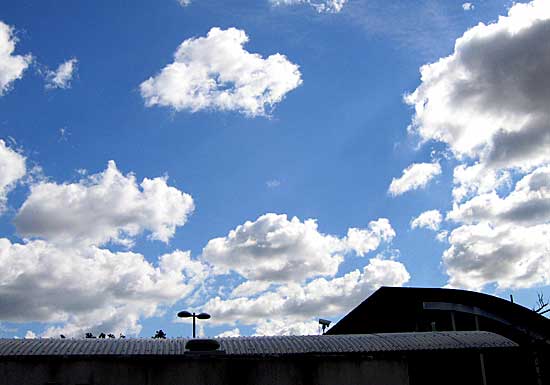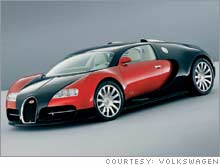Let’s see, now. Take the cost of rebuilding New Orleans and the three devastated states — say $200 billion. Add the cost of running that war over in Iraq — say $100 billion and rising. Call it $300 billion. Time to call a halt to tax cuts.
Not a bit of it.
Here’s Dubya’s latest word on the question:
On Friday, Bush ruled out raising taxes to pay the massive costs of Gulf Coast reconstruction, saying other government spending — which neither he nor his aides identified — must be cut to pay for a recovery effort expected to swell the budget deficit by $200 billion or more.
“You bet it’s going to cost money. But I’m confident we can handle it,” he said at a White House news conference with Russian President Vladimir Putin.
Congress already has approved $62 billion for the disaster, but that is expected to run out next month and require another budget-busting installment. The federal deficit was projected at $333 billion for the current year before the storm slammed into the Gulf Coast more than two weeks ago. Some fiscal conservatives are expressing alarm at the prospect of massive additional federal outlays without talk of what other spending to cut.
The Seattle Times comments that
The proposed record reconstruction spending in the wake of Hurricane Katrina, estimated as high as $200 billion, is all but certain to add to a mushrooming national debt that already has the country dependent on foreign investors.
The sum is about equal to what has been spent on the wars in Iraq and Afghanistan. It’s almost half the size of this year’s domestic discretionary spending, essentially everything the government does besides national defense, Social Security, Medicare and Medicaid.
President Bush vowed yesterday to rebuild the tattered Gulf Coast, “whatever it costs.” He ruled out tax increases, which means the new spending will add to the burden on taxpayers from the federal budget deficit, now $331 billion, and the national debt, now $4.6 trillion.
“It means we’re going to have to make sure we cut unnecessary spending,” Bush said. “It’s going to mean that we maintain economic growth and we should not raise taxes.”



